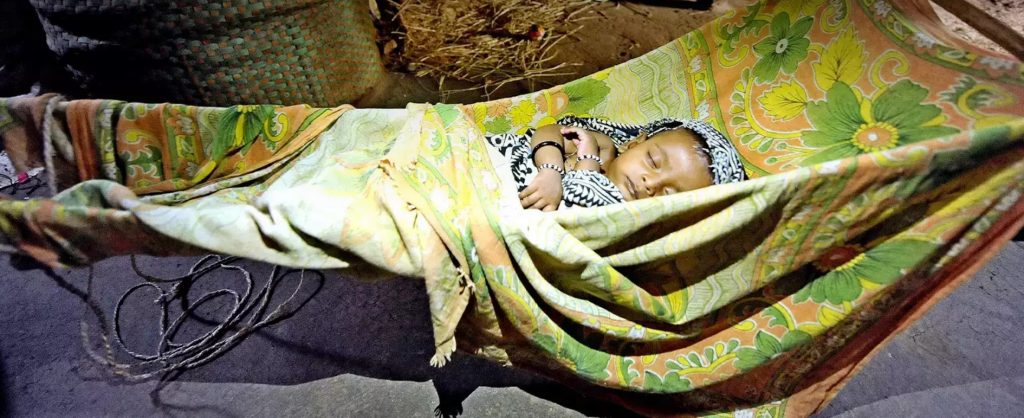India has little hunger but substantial child malnutrition. That simple truth is obfuscated by the Global Hunger Index (GHI), prepared by European NGOs, showing India falling from 101st to 107th of 123 countries in 2022, among the hungriest. This cannot be true since 75% of rural and 50% of urban families get 35 kg of grain per month at just Rs 2-3/kg. Tamil Nadu gives 35 kg of rice free. No country does better.
GHI does not measure hunger, yet calls itself a hunger index to sensationalise matters. This makes headlines but is statistical garbage.
Instead of asking people if they are hungry, the GHI uses four other measures. Three concern child malnutrition — stunting, wasting, and under-five mortality. The fourth is food security, derived from Food and Agriculture Organisation (FAO) estimates that ignore India’s free feeding scheme after Covid.
An index that mainly measures the condition of under-5 children is simply not a measure of national hunger. Besides, two-thirds of child mortality relates to those dying in their first year. The cause would overwhelmingly be disease and neglect, not hunger. So why include this in a hunger index?
GHI may say most countries don’t publish data on hunger, so proxies (like stunting) are necessary. However, their proxies are highly misleading, as India’s hunger data shows.
National Sample Survey Office (NSSO) surveys over decades asked if people were hungry in any month. In 1983, only 18.9% said they were ever hungry. This embarrassed the government whose poverty ratio, supposedly reflecting minimum calorie requirements, was twice as high. So, the NSSO dropped the question in its next survey! That caused an uproar. The question was reinstated in a slightly different form.
India’s hunger ratio fell in 1993-94 to 5.5% in rural and 1.9% in urban areas, and further in 2004-05 to 2.6% in rural and 0.6% in urban areas. This was so close to zero that the NSSO stopped asking the question.
Clearly poverty and hunger are very different. India’s poverty ratio was 25% when its hunger ratio was barely 3%.
Based on international standards, the government poverty line was linked to consumption of 2,400 calories in rural and 2,200 calories in urban areas. NSSO surveys showed that calorie intake came down from 2,266 calories in 1972-73 in rural areas to 2,221 calories in the 1980s, below the 2,400-calorie norm.
Similarly, in urban areas calorie intake declined from 2,107 in 1972-73 to 2,089 calories in 1983. With rising incomes, people switched from quantity to quality — from cereals to proteins — and to non-food items like cycles and TVs. In effect, they self-declared, they were no longer hungry at 2100 calories. The NGOs imply people don’t know they are hungry. What arrogance!
Top economists (Deaton, Dreze, Hanumantha Rao, Mahendra Dev) showed that with mechanisation of work and motorisation of transport, people needed far fewer calories per day. This finding was not used to adjust the poverty benchmark, a serious error. Alarmists exploit this.
Many institutions and NGOs wrongly conflate hunger with malnourishment. Obesity is malnutrition but is not hunger. Fat people are often hungry but are not underfed. NGOs call malnourishment “hidden hunger”. That is misleading rhetoric. Hunger can be met by additional calories while malnutrition requires different remedies.
Demographer Sonalde Desai has castigated GHI’s measure of calorie insufficiency, based on a highly unsatisfactory Gallup poll of 3,000 people. Little is known about the poll’s representativeness. Desai says stunting and anaemia are high even in the richest 40%, so clearly malnutrition is not hunger.
Demographers Monica Dasgupta and Dean Spears have shown that substantial calories are diverted to fight diarrhoea and other diseases, reducing calorie absorption. This could explain why people who eat enough may nevertheless be under-nourished. Better public health and sanitation are solutions. I am puzzled that government efforts — nutritional education, targeted feeding of pregnant mothers and children, Swachh Bharat, the new piped water scheme — have had so little impact on child size.
Former Niti Aayog chief Arvind Panagariya says FAO standards are irrelevant and India should devise its own standards. He says by FAO standards stunting in Kerala, India’s best state, is worse than in Senegal, but that is simply not credible for such a rich, educated state. Maybe shortness is a genetic Indian feature taking generations to improve.
However, stunting has fallen much faster in other developing countries. We face a nutritional puzzle. Experts think the answer lies in better mothers’ education, sanitation, anganwadi feeding of pregnant mothers and young children. Such programmes have expanded rapidly in India and should have had a substantial impact. That has not happened.
Experts say more of the same will do the job. I suspect the issues are more complex and need more research.
However, we know for certain that child malnutrition is totally different from national hunger. Let’s pour contempt on indices that confuse the two.


